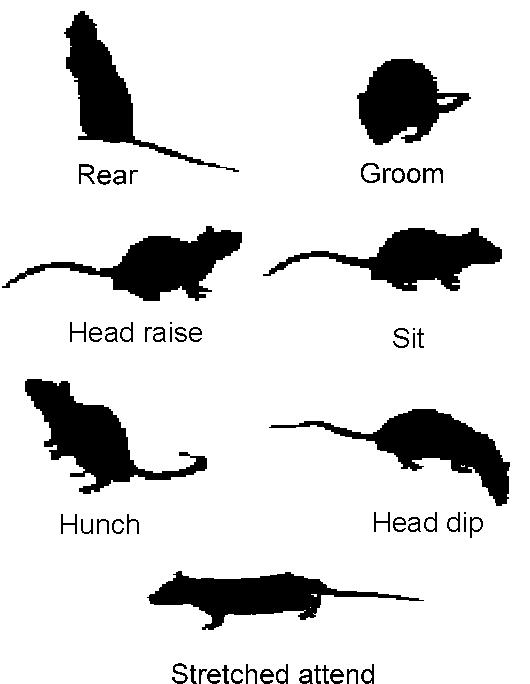
Classification of rat behavior by a neural network
J.B.I. Rousseau1, P.B.A. van Lochem2, W. Melder1, C. Costa-Florencio1, W.H. Gispen1 and B.M. Spruijt1
1 Rudolf Magnus Institute for Neurosciences, Department of
Medical Pharmacology, Utrecht University, Utrecht, The Netherlands
2 Noldus Information Technology b.v., Wageningen, The Netherlands
The limited human capabilities to recognize and record behaviors and disagreement between observers on the delineation of behavioral categories have prompted the development of automated behavior registration methods. The use of image processing software and hardware to quantify the locomotion of animals in various experimental settings is becoming a standard method in biomedical research. In this study an attempt is made to qualify the on-going behavior of rats from digital images with the postures of the rats. At a certain conceptual level behavior can be considered as a continuous stream of postures while the transition from one posture to the next marks the onset of a new behavior.
Video recordings were made of 12 male Wistar rats placed on a black rectangular platform. Using the EthoVision system, the recordings were converted to digital movies of 8 minutes duration each at a sampling rate of 5 frames per second. The behaviors were classified from the video recordings by two experienced observers according to the following ethogram: walk, sit, groom, rear, hunch, head dip, head raise, rotate and stretched attend. A third observer reviewed the digital movies frame-by-frame and classified the posture of the rats in each of the 28800 video frames. In figure 1, typical examples of some of the behavioral categories are displayed.

Various parameters describing the shape of the rat were calculated from the digital movies by a special-purpose image analysis program. These parameters were normalized and the data from 3 consecutive frames was used as input parameters for a neural network. We chose a neural network as a classification paradigm because of its ability to classify complex fuzzy data and because no presumptions have to be made about the underlying structure of the classes contained in the data. The data was split into a training set on which the neural network was trained and a validation set with which performance of the neural network was evaluated. A standard back propagation network with a momentum term and 120 hidden neurons was trained with the training set. After training, the network correctly classified 84.85% of the behaviors in the combined training and validation sets. This reliability was comparable to the inter-observer reliability between the two human observers.
The classification of rat behavior using image processing techniques and neural networks seems to offer an important additional tool potentially circumnavigating a large number of shortcomings of human observations. The application of this technique to a number of standard behavioral tests must be investigated further.
Financial support was received from Eureka project no. EU88011.

Poster presented at Measuring Behavior '98, 2nd International Conference on Methods and Techniques in Behavioral Research, 18-21 August 1998, Groningen, The Netherlands